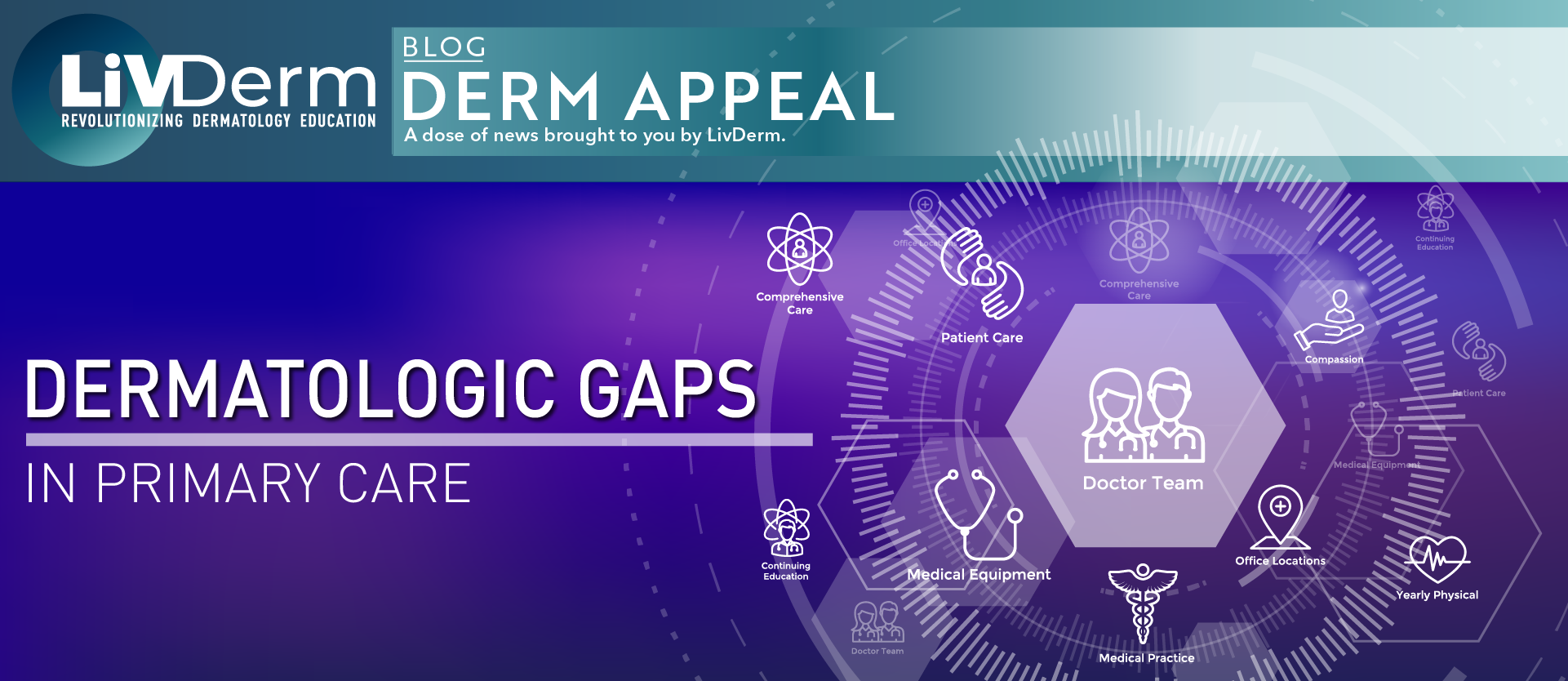Access to dermatologic services and care has posed a challenge in the industry long before the COVID-19 pandemic forced many clinics to shut down. Furthering this challenge, the COVID-19 crisis has shifted the general public’s awareness away from non-emergency medical services and forced the transition of many specialty professionals to the frontlines of the pandemic. Concurrently, the standard of dermatologic care remains varied with racial disparities continuing to prevail as a result of insufficient medical education.
As such, dermatology care is in high demand among primary care practices. An increasing number of patients are presenting to primary care facilities with cutaneous concerns with current data indicating that skin conditions are now among the most common diseases encountered by primary care physicians. Due to gaps in training and education, primary care physicians often lack comprehensive dermatological knowledge which can lead to diagnostic uncertainty, treatment delays, as well as worsened patient satisfaction and outcomes.
Investigating Dermatologic Services Within Primary Care
Patients frequently present to their primary care physicians with skin conditions and other dermatologic symptoms, however, the frequency of these patients has not been well studied thus far. A previous study evaluated the prevalence of patients presenting to primary care with dermatologic symptoms as well as the likelihood of subsequent referrals and impact of the primary care provider on the quality of skin care.
A team of researchers reviewed retrospective chart data from patients seen during a 2-year period at a general medicine clinic within the University of Miami and upon referral to a University of Miami dermatology office. The data obtained described the prevalence of skin disease, dispositions of referral, diagnoses made, as well as the procedures performed.
The study’s results revealed that during the 2-year period, 36.5% of patients presenting to primary care physician had at least one dermatologic skin concern. Of the 208 total patients with skin disease, 60% reported cutaneous symptoms as their primary complaint. A wide range of diagnoses was made by primary care physicians, yet a limited number of diagnostic procedures was performed. However, diagnoses made by physicians were concordant with those made by dermatologists up to 57% of the time.
A large percentage of patients visiting the primary care setting are subsequently referred to dermatologists for more in-depth care, such as for the biopsy of a suspicious lesion, to confirm a diagnosis, or to establish a diagnosis. Of the 37.5% of patients referred to a dermatologist in the study, 68% were referred upon initial evaluation.
Lack of Appropriate Training
Contributing to the challenges encountered by primary care physicians is a widespread lack of adequate training and education in dermatology. Per data from a recent survey, primary care physicians may be ill-equipped to diagnose or treat basic skin conditions as a result of minimal dermatology training as part of the general curriculum. Researchers reported that the majority of surveyed institutions didn’t offer dedicated dermatology courses or require students to take clinical rotations in dermatology.
Teledermatology Services for Improved Access
The COVID-19 pandemic has transformed the overall field of medicine, affecting all specialties to some degree. Social distancing requirements and virus concerns have steered many patients away from routine appointments leading to a potentially detrimental surge in delayed diagnoses and treatments. However, the practice of dermatology is well suited to telemedicine as the prevalence of technology allows seamless and convenient care delivery. For patients who may otherwise lack access to dermatology services, telemedicine services can make specialized skin care more available, accessible, and cost-effective.
Furthermore, teledermatology services can be leveraged for triage within the primary care setting to address skin conditions and enhance treatment efficacy while decreasing the waiting time for an in-person dermatologist appointment. Research has shown that teledermatology programs have been able to complement conventional dermatologic care and enhance access to these services in rural areas.
Additional benefits of implementing teledermatology services into a primary care practice include the potential to optimize in-person visits for patients with complex skin conditions and to allow for quick and convenient diagnostics of more common diseases. At the same time, this can help preserve resources, mitigate the need for patient transportation, and reduce the time commitment for both patients and providers.
To bolster healthcare efficiency and reduce the need for expensive outpatient care, some experts propose integrating specialty medical professionals and leveraging their expertise within the primary care setting.
This can be done both virtually and within the physical clinical setting as patient demands are likely to transform in the coming years. Additionally, there is an urgent need for improved education and training concerning dermatologic care, in particular for the treatment of skin of color. To help bridge prevailing gaps in dermatologic care, education, and training in the clinical practice, physicians are invited to attend our upcoming online conference, Deep Dive: Dermatology on the Frontlines, taking place on April 24, 2021.
















